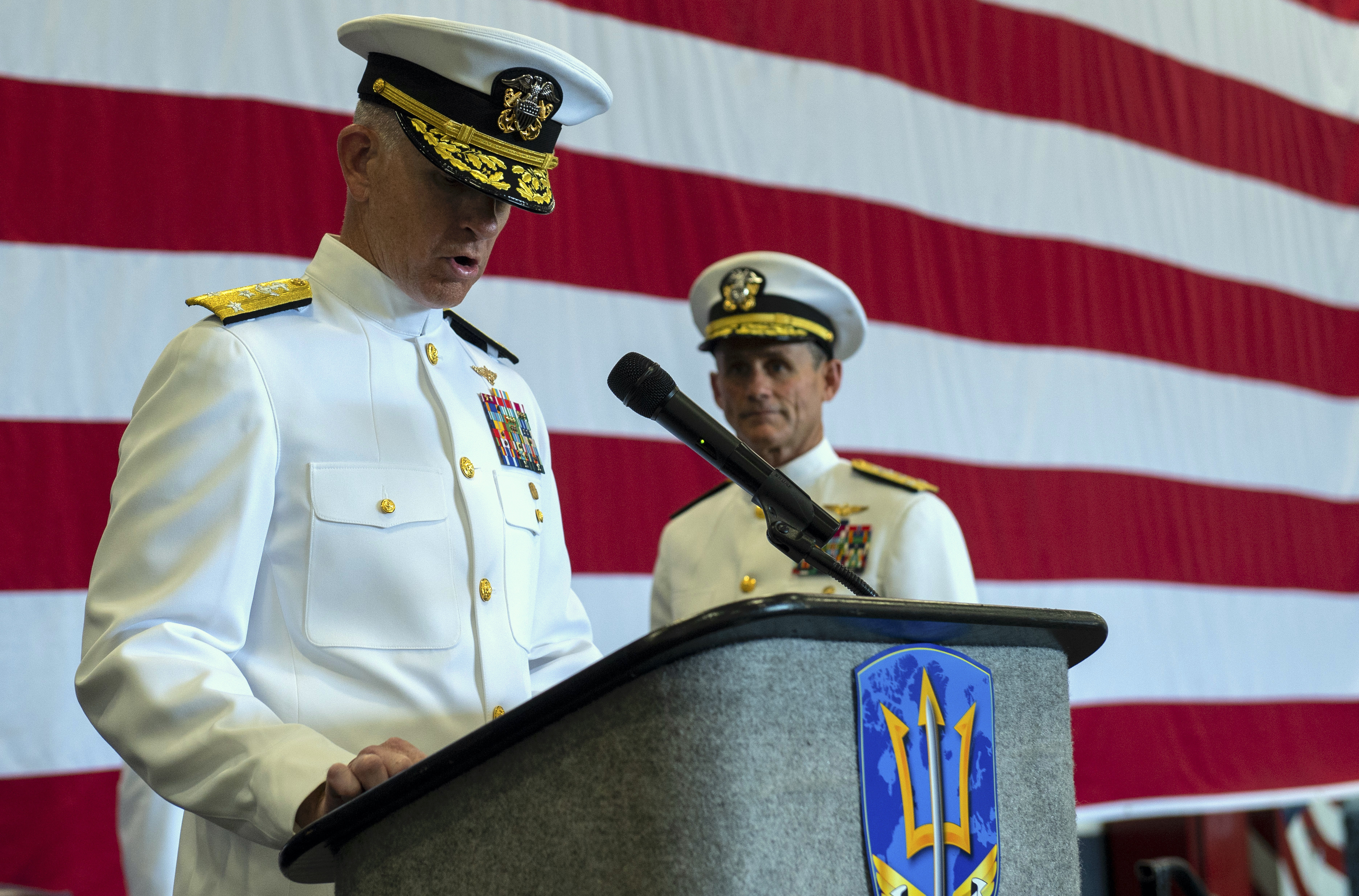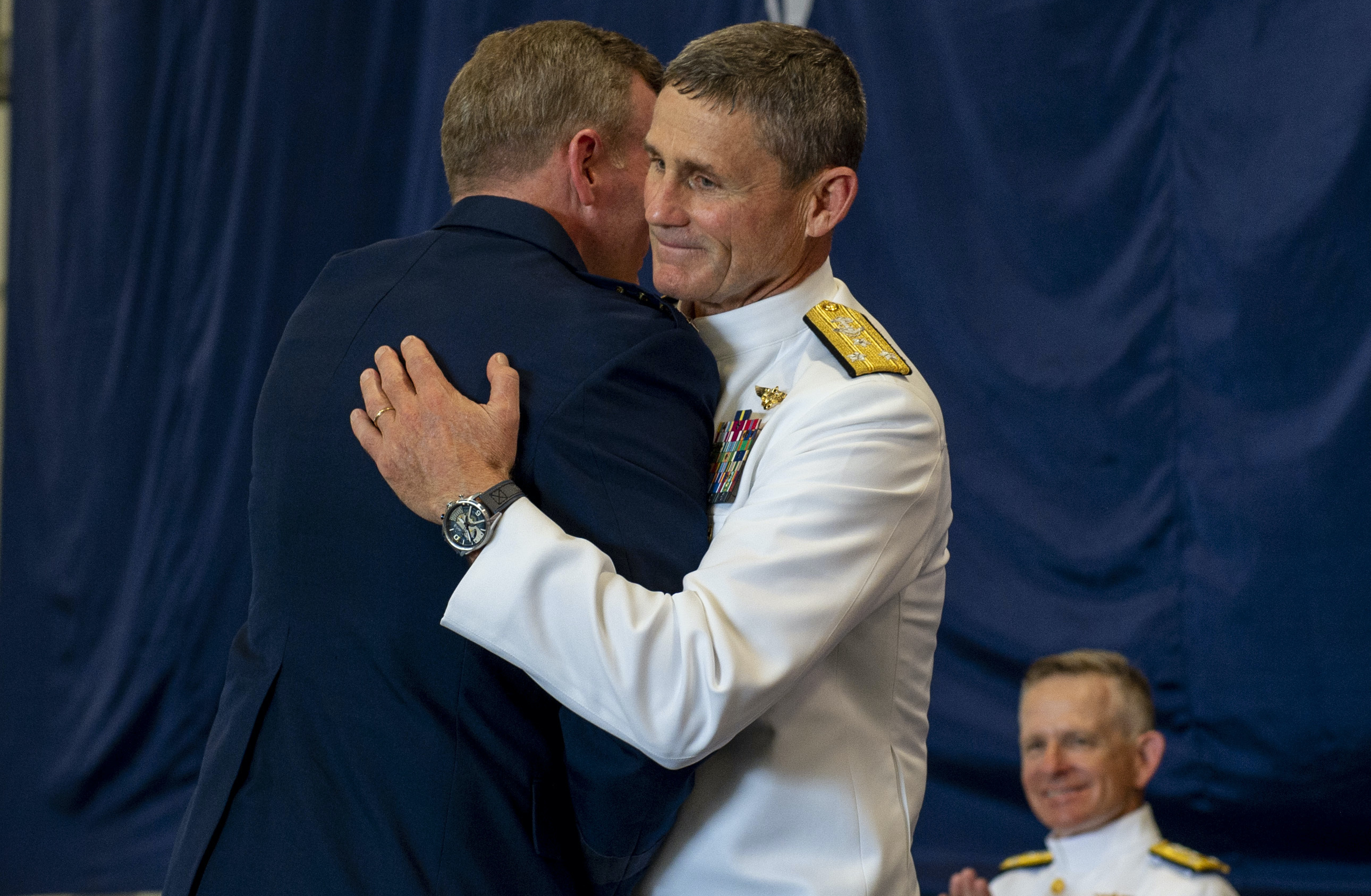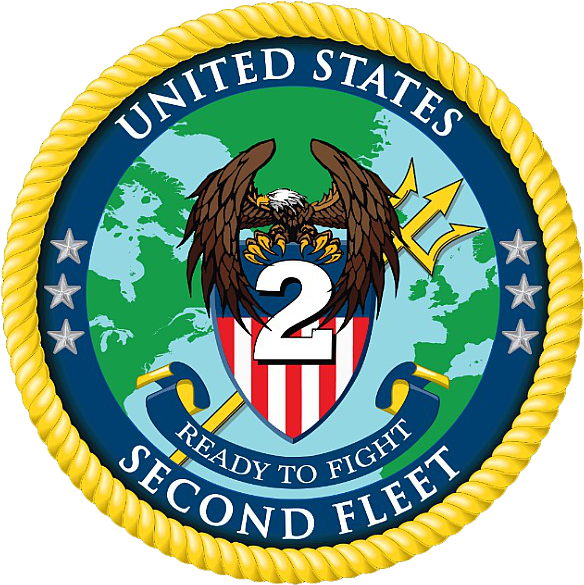
ABOARD THE AIRCRAFT CARRIER USS HARRY S. TRUMAN – A new commander has taken charge of the Navy and NATO’s newest Atlantic-based naval commands.
Newly promoted Vice Adm. Daniel Dwyer took command of U.S. 2nd Fleet and NATO’s Joint Forces Command Norfolk in a ceremony aboard USS Harry S. Truman (CVN-75) – the next carrier set to deploy from the East Coast.
Dwyer, a career fighter pilot, was most recently the director of plans and policies for U.S. Cyber Command since last summer. Prior to the job at Fort Meade, Md., he was the Chief of Naval Air Training (CNATRA), according to his service biography.
“I plan to bring cyber into all our operational planning … It’s all about readiness and preparing the next deployers because the Atlantic is no longer an uncontested [area of responsibility] and when our ships cast off all lines and our aircraft launch from the deck they need to be ready,” Dwyer told USNI News in a brief interview aboard Truman.
“Any opportunity to train with our allies and partners furthers that readiness and we’ll be focusing on exercises, interoperability and improving our collective readiness across not only U.S. 2nd Fleet but also Joint Forces Command Norfolk.”
Born in 2018 and led by career fighter pilot Vice Adm. Andrew “Woody” Lewis, 2nd Fleet is only loosely a geographic command, with an area of responsibility that starts at the East Coast and extends into the Arctic. Driving the creation was the emergence of a more capable Russian Navy submarine force armed with a new generation of sophisticated attack boats that were harder to find and harder to fight, several defense officials have told USNI News.

In order for the Russians not to exploit the seam between the old 2nd fleet and 6th fleet – the longitude extending from the southernmost tip of Greenland – the new command was set to operate throughout the region to control forces across the Atlantic for specific operations. Ashore, 2nd Fleet took charge of training and readiness responsibilities as a component of U.S. Fleet Forces.
“We have seen an ever-increasing number of Russian submarines deployed in the Atlantic, and these submarines are more capable than ever, deploying for longer periods of time, with more lethal weapons systems,” Lewis said in early 2020 at an event hosted by the U.S. Naval Institute and the Center for Strategic and International Studies.
“As such, our ships can no longer expect to operate in a safe haven on the East Coast or merely cross the Atlantic unhindered to operate in another location.”
Following the reestablishment of 2nd Fleet, NATO set up the Joint Forces Command as a separate chain of command to the Europe-based Supreme Headquarters Allied Powers Europe.
Speaking at the change of command, Fleet Forces commander Adm. Christopher Grady praised the speed in which Lewis stood up the command, with an initial force of 11 officers and four enlisted sailors from the outset. SHAPE commander Air Force Gen. Tod Wolters said Lewis had to endure an “obnoxious” schedule to stand up the NATO portion of the command.

JF Norfolk reached full operational capability last month.
“The mission of this command is to fight the Battle of the Atlantic,” Chairman of the Joint Chiefs of Staff Gen. Mark Milley said at the July ceremony aboard USS Kearsarge (LHD-3).
Lewis reiterated what he saw as the major threats for the command in his speech at the Friday ceremony.
“The first trend is escalating competition with both Russia and China. The second is the ever-increasing exploitation of information,” Lewis said.
“The third is the increasing threat to the national economy, causing rising poverty and instability and … the last trend is our changing climate phenomenon that is reopening the waterways in the Arctic where we see increasing interest around the world.”
He called out the 2019 Baltic Operations exercise in Europe and the scramble to deploy USNS Comfort (T-AH-20) and NATO exercise Steadfast Defender as some of the highlights.
“As I pass the torch, I’m slowly looking at the past with pride and all that we have done,” Lewis said.





